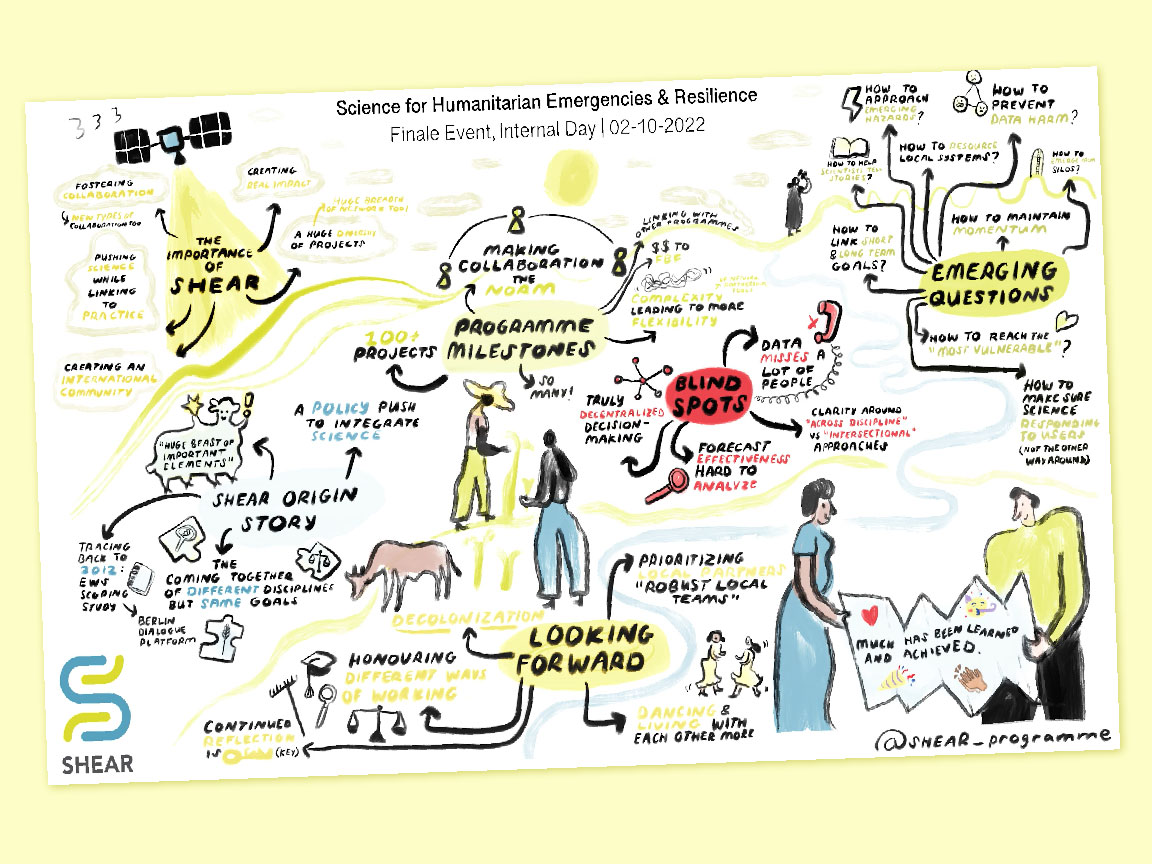
Blog – Science for Humanitarian Emergencies and Resilience: looking back (and forwards)

By Dorothy Heinrich and Fleur Monasso, Climate Centre, Montreal/The Hague
It’s time to say goodbye to Science for Humanitarian Emergencies and Resilience (SHEAR) after five years of intense collaboration in many different countries – a programme that was first conceived seven years ago at the 2015 dialogue platform in Berlin amid discussions about how best to integrate climate science and humanitarian practice.
As ideas there crystalized, the Climate Centre deepened its own engagement by helping to shape the FATHUM component of SHEAR research, and by volunteering to take on a role as one of two knowledge brokers together with Practical Action.
Two additional integration grants then followed: one on lessons learned about anticipatory action and another on impact-based forecasting.
Good research is essential for humanitarian work, especially climate-smart programming. For example, the history of SHEAR is intertwined with the better use of climate information applied in our anticipatory action work – a major priority for the Climate Centre for nearly a decade.
The Climate Centre’s Catalina Jaime, who was a member of the team who designed team of SHEAR, said today: “The full integration of social and climate science and humanitarian practice is central to reducing the impact of extreme weather.”
As we look back on five years of incredible partnerships and results, many key moments stand out: from exciting research collaborations to joint learning, from interactive meetings to publications and science-informed early action protocols.
As a way of summarizing and celebrating these elements of SHEAR, we have developed a programme video, showing the successes of this science-to-practice approach.
‘Continued journey’
The range of tools SHEAR work has generated is enormous, and together with established collaborations and coordination mechanisms it will continue to have an impact on the ground in the project areas and to support the wider humanitarian system.
Most recently, the SHEAR final event (graphic) was a wonderful moment of memory and hope for the future of such research: another video graphically illustrated the incredible vibe and energy of SHEAR, with a beautiful poetic note on what was achieved.
Climate Centre Director Maarten van Aalst commented: “We have done something that is visionary but rooted in real-life practice. It is a continued journey that we will all be part of as the legacy lives on.”
The Climate Centre is committed to continuing to building on SHEAR’s store of scientific insights and humanitarian practice.
Through our participation in the Anticipation Hub we will support partners in the humanitarian sector with forecast-based financing and promote SHEAR outcomes and tools related to this theme; the LandAware network will do the same for landslides.
The Climate Centre also hopes to engage with the upcoming UK-funded Climate Adaptation and Resilience programme in various capacities, bringing its expertise on the climate-development-humanitarian nexus to projects under this banner.
A graphical representation of the final event in February of the SHEAR programme, which has now closed. (Image: Rebeka Ryvola/Climate Centre)